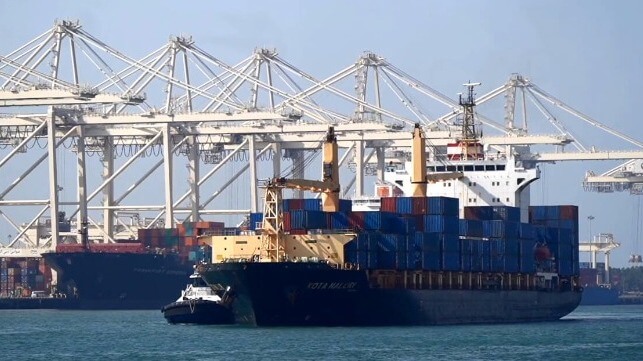Smaller Containership Order Trend Continued by Pacific International

Container shipping lines are continuing to expand their fleet of smaller ships. While much of the attention goes to the ultra-large vessels setting new records as part of the emerging class of massive 24,000 TEU vessels, the industry has quietly been building the orderbook at the other end of the spectrum with smaller, more versatile vessels as well.
The orderbook for containerships in the 8,000 TEU range is approaching 100 vessels. While some vessels will be used to replace older tonnage and upgrade from vessels under 6,000 TEU capacity, the new smaller vessels are also giving the industry the ability to maintain higher service frequency on routes and more port calls that are not able to support or facilitate the larger vessels. The growth in the small ship orders has also given the container lines the ability to focus on vessels in the 15,000 to 18,000 TEU range, which is emerging as the sector with the greatest versatility, and the giant 24,000 TEU vessels which provide economies of scale for the long-haul, high-density routes.
“Despite accounting for only 7.2 percent of the combined trading fleet, contracting has been very active in the 6,000 to 8,000 TEU size segment, now accounting for 10.8 percent of the total order book,” wrote Niels Rasmussen, Chief Shipping Editor of BIMCO in a June 2022 report. BIMCO highlights that orders for vessels in this size range reached nearly 40 percent of all contracting since October 2020, which is nearly double from a low of just over 18 percent of the orderbook in late 2020.
Further evidence of the trend was supplied with the announcement today at Singapore-based Pacific International Lines (PIL) has ordered four 8,000 TEU container vessels due for delivery in 2025 from China’s Yangzijiang Shipbuilding.
“This is part of our ongoing efforts to optimize and renew our assets for greater operational efficiency. The new vessels will complement our existing fleet and support us in the enhancement of our connectivity to better meet the needs of our customers worldwide,” explained Lars Kastrup, CEO of PIL.
The shipping company, which was refinanced in March 2021 and recently named Kastrup as its new CEO, is working to recoup after years of financial losses and nearly four years since it introduced its last new builds. In March 2022, PIL placed its first new orders to build four 14,000 TEU LNG dual-fuel vessels.
The latest orders for the smaller capacity vessels continue the company’s efforts toward reducing its carbon footprint. They will LNG dual-fueled vessels and they also elected to make the vessel future-ready. According to the company, these vessels will each be equipped with an ammonia-ready fuel tank that can immediately convert to the future fuel.
‘We have identified LNG as a commercially viable transition fuel solution and the new vessels, which will once again be LNG dual-fuel and ammonia ready,” said Kastrup. He noted that the new vessels will also contribute toward achieving PIL’s decarbonization goal of attaining net-zero carbon emission by 2050.
